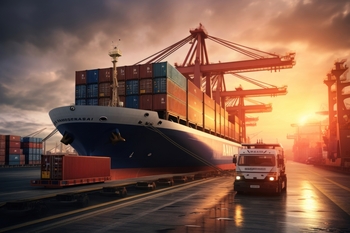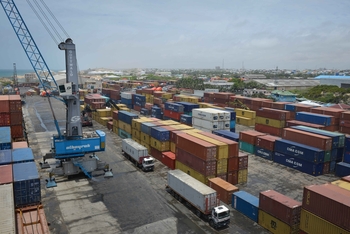
In the world of international trade, the customs clearance process is a pivotal step that ensures the smooth movement of goods across borders. Whether you’re a seasoned importer or a newcomer to global trade, understanding the intricacies of customs clearance is essential for successful cross-border transactions. In this comprehensive guide, we’ll walk you through the customs clearance process, from the documentation required to the roles of key stakeholders, providing you with the knowledge needed to navigate this critical aspect of international trade.
The Importance of Customs Clearance
Customs clearance serves as the bridge between a shipment’s country of origin and its destination. It involves complying with legal and regulatory requirements while facilitating the efficient movement of goods across borders. Proper customs clearance ensures that goods are accurately classified, valued, and declared, helping to prevent delays, fines, and disputes that can arise from non-compliance.
Key Steps in the Customs Clearance Process
 The customs clearance process involves several key steps that must be carefully followed to ensure the legality and efficiency of cross-border trade:
The customs clearance process involves several key steps that must be carefully followed to ensure the legality and efficiency of cross-border trade:
- Documentation Preparation: Accurate and complete documentation is crucial. This includes commercial invoices, packing lists, bills of lading, certificates of origin, and any required licenses or permits.
- Customs Declaration: The importer or their customs broker submits a customs declaration to the relevant customs authority. This document provides details about the shipment’s contents, value, origin, and intended use.
- Classification and Valuation: Customs authorities determine the appropriate classification of the goods based on established codes and assess their value for duty calculation.
- Duty Calculation: Customs duties, taxes, and fees are calculated based on the declared value, classification, and applicable trade agreements or regulations.
- Duty Payment: The importer pays the calculated duties and taxes to the customs authority. Payment can be made through various methods, including cash, credit, or electronic transfer.
- Examination and Inspection: Customs may choose to inspect the goods to ensure they match the information provided in the documentation. This step is critical for security and regulatory compliance.
- Release of Goods: Once the customs authority is satisfied with the documentation and inspection, they release the goods for delivery to the importer or consignee.
Roles of Key Stakeholders
Several stakeholders play vital roles in the customs clearance process:
- Importers/Exporters: These are the parties involved in the transaction, responsible for providing accurate information and documentation to facilitate customs clearance.
- Customs Brokers: Licensed professionals who assist importers and exporters in preparing and submitting customs documentation, ensuring compliance with regulations.
- Customs Authorities: Government agencies responsible for enforcing customs laws, collecting duties and taxes, and ensuring the security of the nation’s borders.
- Freight Forwarders: Logistics experts who manage the transportation and coordination of goods, often working closely with customs brokers to ensure smooth clearance.
- Regulatory Agencies: Depending on the nature of the goods, various regulatory bodies may be involved in the clearance process to ensure compliance with specific regulations.
 Challenges and Considerations
Challenges and Considerations
Navigating the customs clearance process can present challenges and considerations that vary depending on the country, the type of goods, and the trade agreements in place. Some common challenges include:
- Tariffs and Duties: Understanding and managing duty rates, taxes, and tariffs is essential to calculate the total cost of imports.
- Compliance with Regulations: Different countries have varying regulations and requirements that must be met to avoid delays and penalties.
- Documentation Accuracy: Inaccurate or incomplete documentation can lead to clearance delays, fines, or even confiscation of goods.
- Import/Export Restrictions: Certain goods are subject to import/export restrictions or bans, necessitating thorough research and compliance.
- Changes in Trade Policies: Trade agreements, political changes, and evolving trade policies can impact customs clearance processes and requirements.
Benefits of Efficient Customs Clearance
Efficient customs clearance offers several benefits to importers, exporters, and the global trade ecosystem:
- Faster Transit Times: Streamlined clearance processes lead to quicker movement of goods, reducing transit times and supply chain disruptions.
- Cost Savings: Proper clearance ensures accurate duty calculations and minimizes the risk of fines or delays, resulting in cost savings.
- Improved Compliance: Compliance with customs regulations and documentation requirements reduces the risk of legal disputes and financial penalties.
- Enhanced Customer Satisfaction: Efficient clearance means timely deliveries and satisfied customers, leading to repeat business.
Conclusion
A crucial step in international trade is the customs clearance procedure, which guarantees the efficient and lawful transfer of products across borders. By understanding the steps, documentation, and key stakeholders involved, businesses can navigate this complex process with confidence. Efficient customs clearance not only reduces delays and costs but also supports the smooth functioning of global supply chains, fostering international trade relationships and driving economic growth.

Leave a Reply